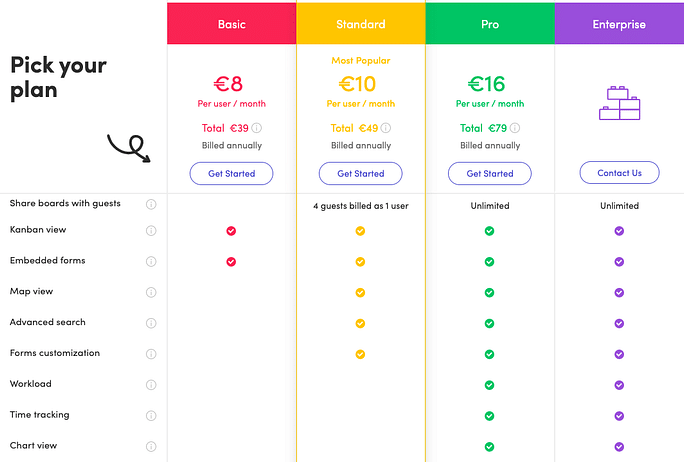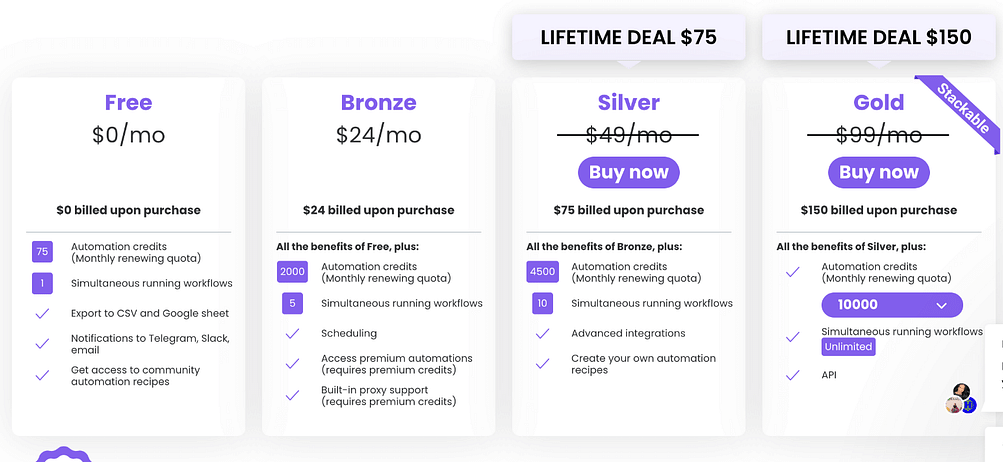Join our Facebook Group
Anchoring Effect
The Anchoring effect is a cognitive bias that causes people to rely too much/too heavily on the first piece of information they've received as a point of reference. How this works? Here's an Anchoring example, let's say you want to buy a nice bottle of red wine online. You come across a nice bottle which is $20,- would you buy it? Now imagine it's an offer, normally it would be $40,-. You're more eager to buy it now, since that's one hack of deal right? You're using the initial $40 as your point of reference to determine the perceived value of the product. When you see the 'sales' price being $20 your head will convince you that you're getting a lot of value for your money.
This cognitive bias, the Anchoring effect, is often related to pricing. It's something that's used by salespeople a lot. They start with a very high price so you give the product/service a higher value for yourself, you probably will end somewhere in the middle. But what if you would have started with an offer, that becomes the anchoring and you're more likely to pay less than when the anchoring effect is played the other way around.
Meaning Of Anchoring Effect
Kahneman and Tversky have done a lot of groundbreaking studies about decision making, specifically around risk management and uncertainty of people. One of their main questions was "how do people form judgements when they are unsure of the facts?". Various studies have shown that it's challenging to avoid factoring it into decisions, even when subjects are informed about the irrelevancy of the anchor. The anchoring rule states that when we're uncertain about the correct answer we take a guess using the most recent number we've heard as a starting/reference point.
The Anchoring effect can also occur in other situations than pricing. It occurs when you use an initial piece of information in order to make subsequent judgments. Judgments are made once the anchor is set by using it as a point of reference. We use these "anchors" as reference points to make our decisions instead of thinking rationally and objectively to make the best decision overall.
Influencers are paid by brands to advertise. When there is an influencer who tests a certain product and does a positive review, all people who see the review are being "anchored" without them being aware of this. If you really trust this influencer you'll tell others that the product/brand is pretty good instead of doing extensive research about the product. The influencer is often biased since this person got the product either for free or is getting paid to promote something.
Examples of the anchoring effect in marketing
Have you ever bought something, just because it was on sale? With items on sale you compare the original price and the discounted sale price. Did you think, "this is a great deal"? If that's the case, I'm sorry to tell you, but you've fallen for the anchoring effect.
Apple anchoring effect
Apple does a great job at marketing. Look at how they marketed the iPad when it launched.

It's classic Apple.
And it's genius. They're focusing on the feel of a $400 device.
There was no mention of the features or tech specifications until the very end of the page. Instead, the copy and visuals focused on how the iPad will 'feel' in your hand.
Does the feeling of a tech product really impact its performance? Not at all. Was this a successful strategy by Apple? 100%.
You know that the feeling of the device has nothing to do with its performance. What about speed? WiFi? Interactivity? Battery time? Charging cables? Accessories? Strength? Pixels? Resolution? Camera? Memory? Not a word.
The reader will then justify the price using the feel as the anchor.
Product Recommendations for Anchoring
If your homepage is the most common point of entry for your customers, putting one of your more expensive products on the home page will anchor the rest of your collection. Remember that the first or primary information that has the greatest impact upon a person's subsequent decisions.
You can also show your "recommended" products first instead of the cheapest options on your product listing page. This is how online shopping websites make you shop more. Open your favorite shopping store and go check the new in section. Here's what mine looks like:
You're going to be blown away. The first product is always of a really high price compared to the average to anchor you. e-Commerce sites don't filter on price, but rather on popularity or relevance. This way they can influence what the results look like for you. Everything else you see after this anchor is a good deal and definitely worth your money, or so they want to make you feel.
Anchoring in e-commerce
This Anchoring effect can be applied in digital situations. Have you ever thought why e-commerce sites aren't filtered on price but rather on "popularity" or "relevance"? This way the e-commerce party has an influence on what the results will look like for you. The first item(s) are not the cheapest this way they create an "anchor" or a reference point. Everything you see after the "anchor" is a good deal or definitely worth your money. Check out this anchoring bias example:

SaaS (Software as a Service) anchoring effect
For SaaS products, you can use the Anchoring bias for, for example, the pricing table. There are different ideas for this pricing table (for desktop). Most pricing tables contain around three or four packages. The low price is a little lower than the average, but you can barely do anything with this package so no one will choose it. The medium package is the best deal, low in price compared to the high package and not a lot more than the low package but with all the features to get going. The medium package is also labeled with "most popular", "most bought" or "best deal" or anything like that to add social proof. Either you set an "anchor" with the low package price or the high package price, both might work but remember to always test it before you implement it.

Suggestions to test for e-commerce websites:
- Add the average price on top of the product grid. The average cost for an airplane ticket is X, when they see cheaper prices than the average people can be more likely to buy that ticket. This could really work for people that are price sensitive.
- Place an expensive item as first on the grid of products. Everything after that will look "cheap". This will make them more likely to buy the product(s) and it will increase the perceived value of the product.
Anchoring offline and online
1. Multiple Unit Pricing vs Single Unit Pricing
Psychologists Brian Wansink, Robert Kent, and Stephen Hoch researched on how multiple unit pricing increased supermarket sales.
For example: On sale there are 4 bottles of green smoothies for $4 vs. On Sale, $1.00/per smoothie.
In this experiment, the multiple unit pricing performed 40% better than the single unit pricing (even though they are the same value). Our brain uses the number four as the anchor for our decision making. Let's turn this experiment around, can this work for e-commerce websites? Yes!
When ordering groceries online, you'll have the same principle, there are tags/labels added to certain products, product types, brands etc. saying buy 2 for $2.00 or like the example above 4 for $4.00. The example below uses the labels, it's a Dutch groceries website.

Anchoring is also applied when selling services. For example, you can sell licenses to use certain tools. In this case, you've got a product that agencies use for their clients. Instead of selling a license per client of the agency, you can let the agency bulk buy licenses. The best part is that the agencies will use your product for their clients, since they already paid the licenses upfront.

2. Purchase Quantity Limits
During another study by Wansink, Kent, and Hoch they looked at how our buying behaviour is affected by purchase quantity. One of the experiments they did was putting up a sign in the supermarket using end-aisle displays to advertise telling people soups for $0.79 per can. With another group of customers they displayed the sign stating "Limit of 12 per person". The experiment showed that the purchase limits increased the sales! The average for the no limit display was 3.3 cans of soup and with the limit sign the average was 7 cans of soup! The brain anchored with the number 12 and adjusted it downward which increased the sales.
The same goes for sales in the fashion industry, we all know these signs telling that you can only take X items from sale. You might think this is because they otherwise run out of stock to soon and that wouldn't be fair. But like with the example about the soups, it's the anchor effect all over again. By limiting the number of products somebody can be, they are more likely to buy more products than they would usually do.
These principles and tactics can be used for webshops!
3. Initial Price Setting
Let's take "sale" as an example again. If you're buying products on sale or at an outlet they always show the original price and the new price. You'll always think "wow this is a sweet deal!". In this case, the original price is the anchor. The price lower than the original one gives the feeling of ow this seems reasonable even it's still more than it's really worth. If you can get somebody anchored on the higher price, everything lower than that seems reasonable and feels like a good deal.
This is something you often see with start-ups. To gain traction with market see first start to sell their product at a lower price, but already showing what the price in a few months will be. The same goes for early bird tickets for concerts. When you buy them online the prices of the normal tickets are already showing. In this case the normal tickets is the anchor for your brain.
Note: If even your most expensive option is way lower than the market average, show the industry average with your price to expose your visitors to higher incidental prices. This is especially true in the case of SaaS companies.
This start-up used the anchor as well:

References
The references contain experiments and studies that prove this bias is there.
Books
Would you like to go more in-depth? Here are our recommendations:



Frequently Asked Questions
Will you use psychology for your experimentation process?
Are you curious about how to apply this bias in experimentation? We've got that information available for you!
Join over 452+ users
- Lifetime access to all biases
- Filter on metrics, page type, implementation effort
- More examples and code for experimentation
Choose your subscription!
Pay with Stripe
Lifetime deal PREMIUM
Get access to the search engine, filter page, and future features.